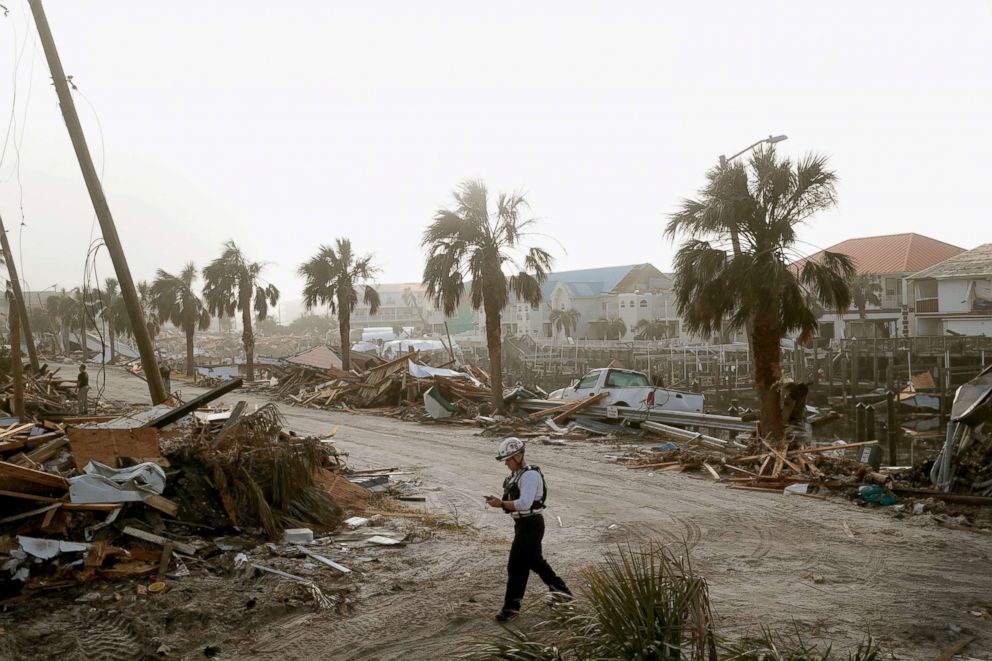Natural disasters remain one of the constant threats that hit homeowners in North America. Incidents ranging from hurricanes, wild fires, to earthquakes bring forth much destruction hence one may run down to bankruptcy if not well insured. It is hence very crucial to understand some nuances of insurances on covers during natural disasters so that your house is protected, and other assets are taken care of as well.
This article will serve as a comprehensive primer on insurance coverage for natural disasters in North America: the different types of coverage available, how the policies differ in different regions, and how to ensure that you are best covered. We’ll also weave in some the (cost-per-click) keywords about insurance, loans, and financial protection.
Understanding Natural Disaster Insurance
Insurance against natural disasters is a very specialized form of protection from natural catastrophes such as hurricanes, floods, earthquakes, and wildfires. A standard home insurance policy will cover a wide array of perils; however, most natural disasters usually fall into special coverage categories.
The Keywords: natural disaster insurance, homeowners insurance, flood insurance, earthquake insurance
Types of Insurance Coverage for Natural Disasters
It is very important to be well-versed in the type of insurance available when trying to protect the house from natural disasters. For each type of disaster, a special policy type may be needed, or an addition could be made to the present policy carried under ordinary insurance.
- Flood Insurance
Flooding is one of the most common and devastating natural disasters in North America. With regular homeowners insurance, damages from flooding are usually not included. A separate insurance policy for floods is required to be insured against flood damage.
The NFIP is a federal program through the Federal Emergency Management Agency and is considered the primary provider of flood insurance. Coverage through the NFIP protects both the structure of your home and its contents. Of course, there are private options, too, and these may provide monetary coverage with higher limits, among other additional benefits.
That is necessary for homeowners in high-risk flood areas, and it is not bad insurance for other homeowners either, because flooding can be done almost anywhere.
flood insurance, FEMA flood insurance, private flood insurance, flood coverage
- Earthquake Insurance
While these could be somewhat of a concern, earthquakes, on the other hand, can cause a significant number of structural damages to a house. Like flooding, earthquakes are also usually not included in a standard homeowner’s insurance cover. Earthquake insurance is a separate policy or endorsement that provides coverage for damages emanating from seismic movements.
In states such as California, where earthquakes are an imminent threat, it is imperative to purchase earthquake insurance. The policies will reimburse the cost of rebuilding your home, cost of repairs to the property, and the replacement of personal property damaged by the earthquake with new property. The earthquake insurance policies should be read very carefully, even though a number of companies vary greatly in some ways—some companies in coverage limits, deductibles, and exclusions.
The Keywords: earthquake insurance, seismic activity coverage, California earthquake insurance, earthquake damage
- Hurricane and Windstorm Insurance
Hurricanes and windstorms can do very serious and widespread damage to homes, particularly those along the coast. Although, in most cases, homeowners’ insurance does cover wind-caused damage, there are a few exceptions. In places with a high incidence, for instance, the Gulf Coast or Eastern Seaboard, insurance companies often require homeowners to take extra windstorm insurance or a provision in their insurance policy for a hurricane deductible.
Windstorm Insurance: An insurance policy for the damage causing to high wind including roof damage, broken windows and fallen trees. It must be responded following the terms of the policy, including the amount of the hurricane deductible – since this is typically a percentage of the home’s insured value as opposed to a fixed dollar amount.
The Keywords: hurricane insurance, windstorm insurance, coastal home insurance, hurricane deductible
- Wildfire Insurance
Wildfires have become an increasingly common and destructive force, especially in the Western United States and Canada. Most home insurance policies do cover damage caused by wildfires since the frequency and severity of these events is changing. Some insurers are actually issuing exclusions or jacking up premiums for homes in high-risk areas.
In wildfire-prone areas, one should carefully consult the homeowner’s insurance and consider purchasing extra coverage. Some insurers are likely to extend endorsements to a wildfire, thus offering extra protection or reducing deductibles in the occurrence of a fire.
The Keywords: wildfire insurance, fire damage coverage, California wildfire insurance, homeowners insurance
- Tornado Insurance
Tornadoes indeed come so suddenly and create massive destruction. But the damage caused by tornadoes is usually covered under the windstorm portion of common homeowner’s insurance policies. Again, much like hurricane insurance, there may be a separate deductible or exclusions with policies against tornado damages in these states colloquially referred to as “Tornado Alley,” which includes Oklahoma, Kansas, and Texas.
Homeowners should make sure that any wind damage is covered within the policy because of the increased tornado potential in that specific region of the country. Endorsements may need to be looked into to cover additional wind damage that a general policy can overlook.
The Keywords: tornado insurance, wind damage coverage, Tornado Alley insurance, homeowners insurance tornado
Natural Disaster Insurance-Variations by Region
The need for certain types of natural disaster insurance varies highly depending on where you happen to live in North America. Each region differs in its potential risks, and policies must be shaped accordingly.
- The Southeastern United States
Homeowners located in the Southeastern United States, states such as Florida, Louisiana, and the Carolinas, are exposed to hurricanes and flooding. For this reason, many homeowners in this region find themselves needing separate flood insurance and windstorm coverage specifically to hedge against what are likely the most common of natural disasters that impact the region in general.
Due to the enormous exposure, insurance expenses are going to be significantly more expensive in this region than in other areas in the entire country. In addition, many insurance companies have instituted hurricane deductibles that can lead to significant financial challenges for homeowners after a storm has swept across this region.
Top CPC Keywords: Florida hurricane insurance, flood insurance Southeast, coastal home insurance, windstorm coverage
- The Western United States
The Western United States is generally quite prone to earthquakes, wildfires, and floods. Generally, earthquake insurance is most highly needed in California, being an area of frequent seismic activity. On the other hand, wildfire insurance is very important on account of the dry climate and heavy forests in this region.
Homeowners in the West should consider comprehensive coverage that includes both earthquake and wildfire insurance, as well as flood insurance in areas prone to heavy rain or snowmelt.
The Keywords: California earthquake insurance, wildfire insurance West Coast, homeowners insurance wildfire, flood insurance West
- The Central United States
There is no secret that the central part of the United States, especially the Midwest, is notorious for severe weather that includes tornadoes, hailstorms, and floods. In that windstorm insurance, the associated, normally included insurance is necessary for homeowners in states like Oklahoma, Kansas, and Texas.
In addition the Midwest will also be needing the flood insurance, more so in the regions heavily built situated near the rivers and streams having the potential for floods. Homeowners, with the fact that some insurance can compensate them just for the wind damage that includes water damage, must verify with their policies to guarantee adequate coverage for both elements.
The Keywords: Tornado Alley insurance, Midwest flood insurance, tornado coverage, hailstorm
insurance
- The Northeastern United States
The northeastern part of the country, encompassing New York, New Jersey, and New England, is exposed to the threat of hurricane, nor’easters, and flooding. Although it doesn’t share the prevalence of earthquakes and wildfires, homeowners should still take care to check for windstorm and flood coverage.
Hurricane deductibles is common along this region – especially the coast. It would be wise for homeowners to also purchase flood insurance since copious rain and storm surges do a lot of damage to areas that would otherwise not be flood ridden.
The Keywords: Northeast hurricane insurance, nor’easter insurance, flood insurance Northeast, coastal home insurance
How to Make Sure You Have Enough Natural Disaster Insurance
Because there are many different risks and regional variations in natural disaster insurance, there is little option other than to be proactive when it comes to making sure you have enough cover on your home. Following are some key strategies to know:
- Be Aware of Your Risk
The first step towards getting enough insurance against natural disaster is to evaluate the risk. One needs to consider the most probable type of natural disaster that can strike their location. Is it a flood zone? Is your dwelling place close to a fault line? Do you live in a wild-fire prone area? This knowledge will help you make a decision about what types of coverage will be necessary.
These include tools from the FEMA Flood Map Service Center, or the geological survey that your state provides. Additionally, input from a local insurance agent who is familiar with regional risks is also valuable.
The Keywords: assess home insurance risk, flood zone insurance, natural disaster risk assessment, insurance coverage
- Review and Understand Your Current Policy
Once you are through with the above step, you now need to very carefully review your present policy for homeowners insurance. Find out whether there are any types of exclusions or limitations regarding natural disasters. Does your policy cover you for wind damage, but not flood damage? Are there separate deductibles if a hurricane or earthquake strikes?
Review your policy for gaps in coverage and buy additional endorsements or policy riders. If your base policy doesn’t cover flood damage, for example, you must purchase a flood insurance policy from the NFIP or a private insurer.
The Keywords: home insurance policy review, understand insurance coverage, add insurance endorsements, homeowners policy exclusions
- Consider Higher Coverage Limits
For regions regarded at high risk of being hit by disaster, one would thus have high coverage limits to your home and other private property. The costs involved in rebuilding after a disaster can be huge, and therefore, standards of coverage may likely fail to provide the actual repair costs fully.
Of course, this will naturally increase the cost of the coverage, but it will leave the mind well at rest, not worrying that in case of disaster, one is not totally covered. Work with your insurance agent on the appropriate amount of coverage in relation to your home’s value and the cost of rebuilding.
The Keywords: increase home insurance coverage, rebuild cost coverage, high-value home insurance, insurance coverage limits
For more information visit the following sites:








